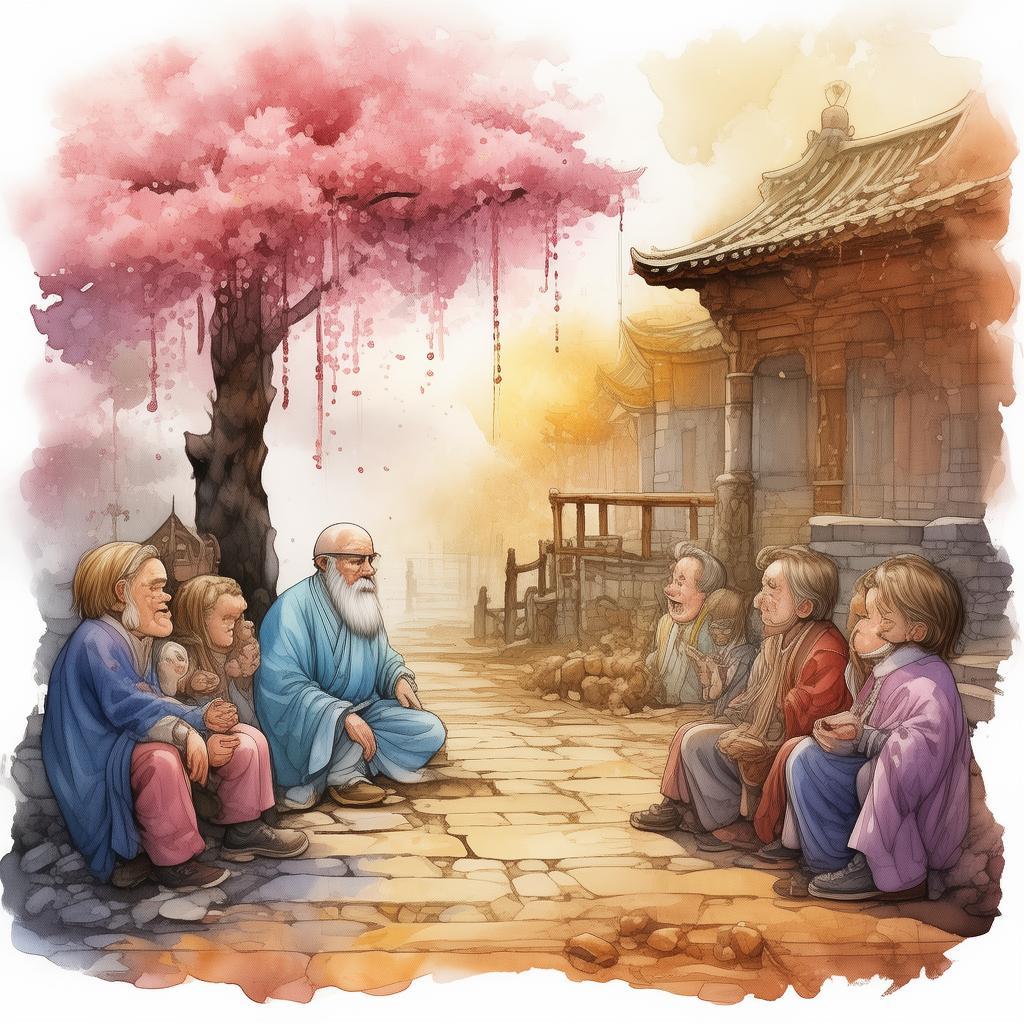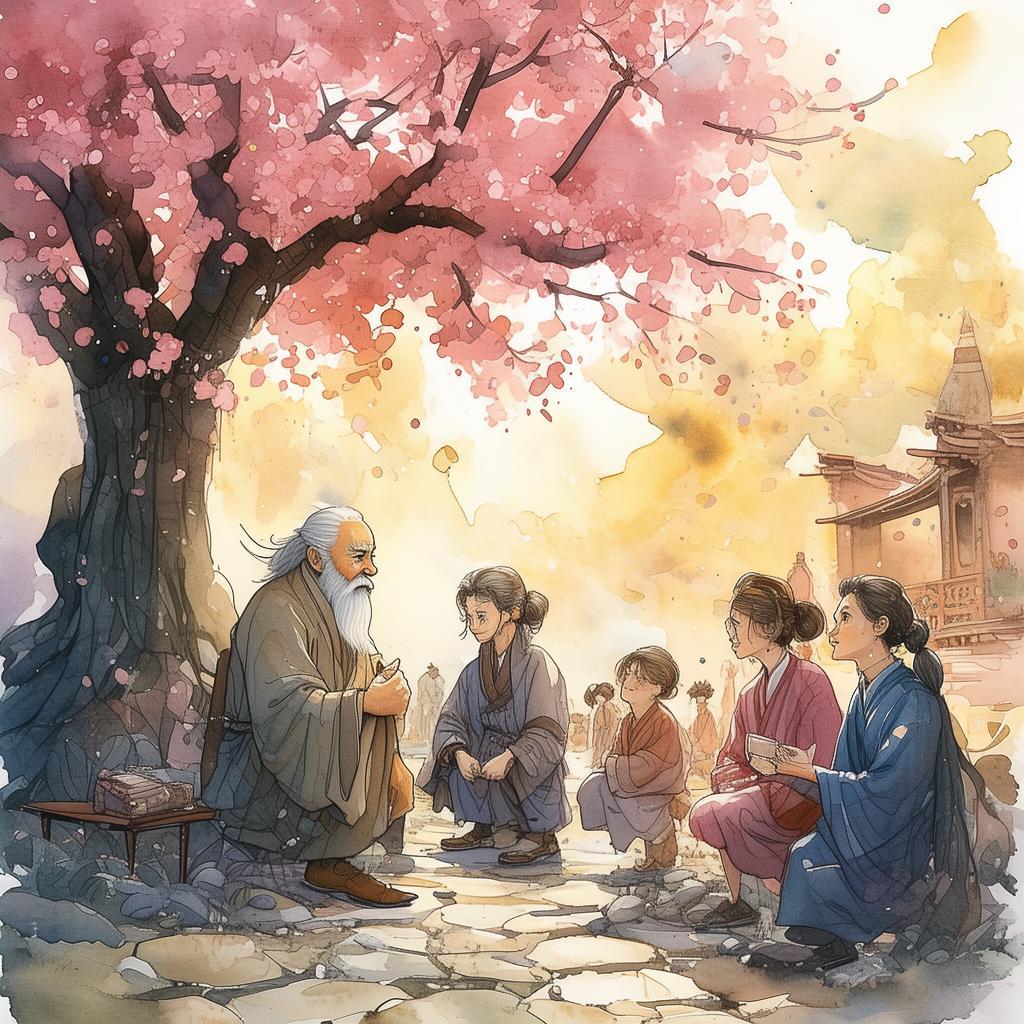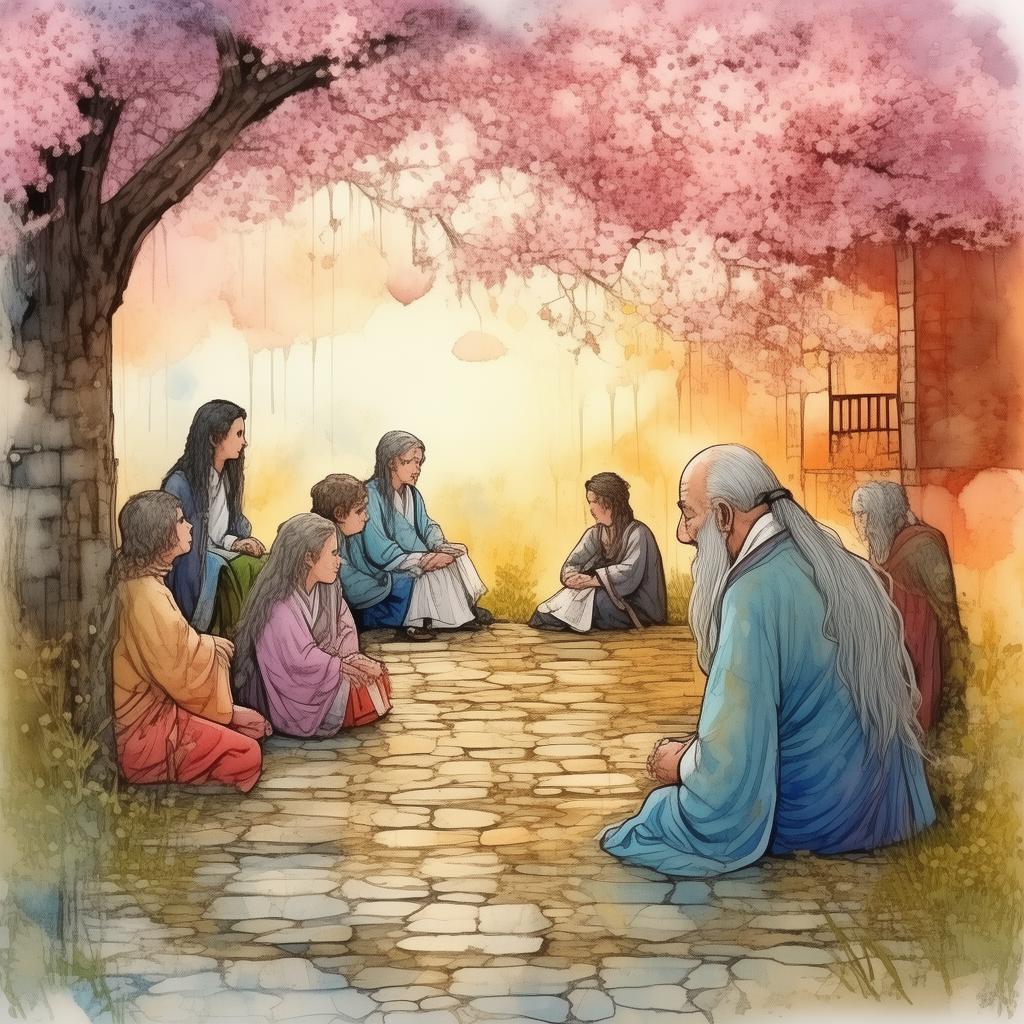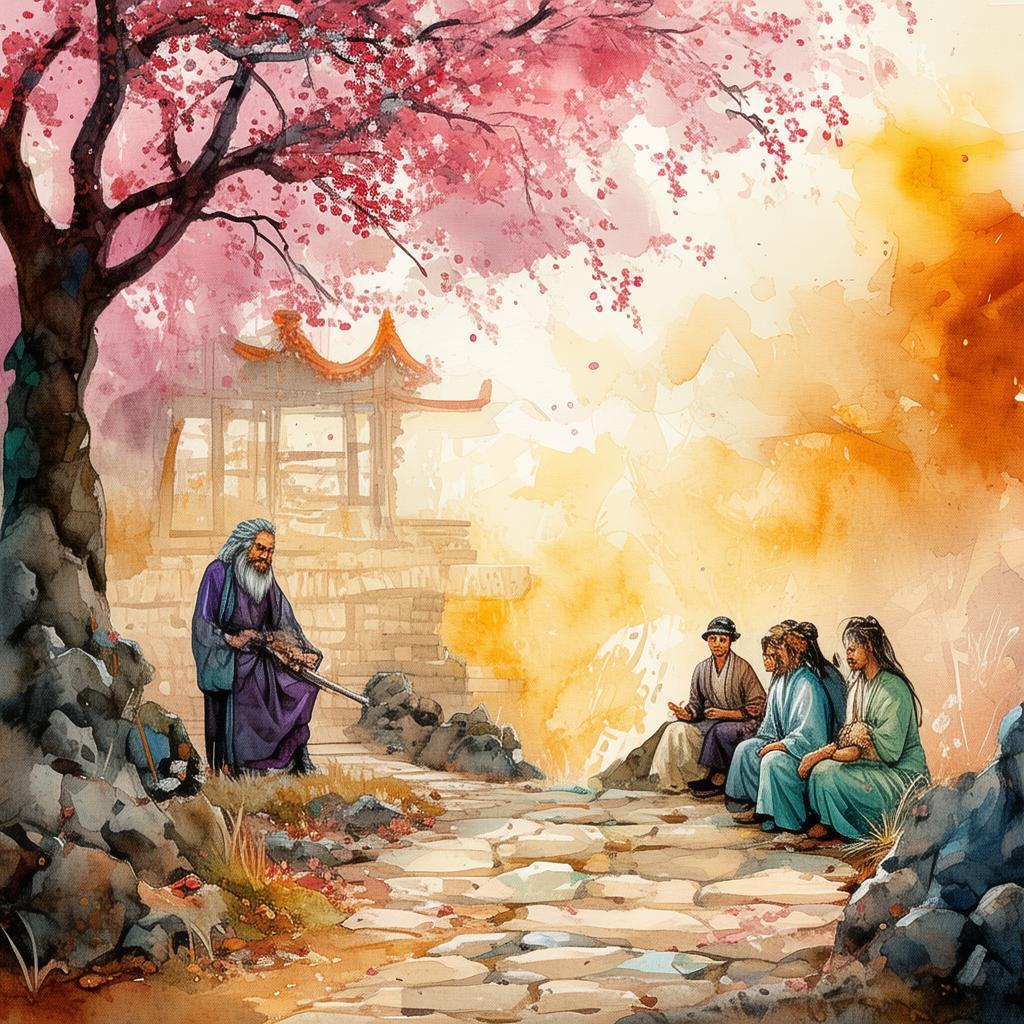Canvas of Hope: The Artisan's Resurrection
In the heart of a bustling city, where the cacophony of life never ceased, there lived an artist named Liang. He was known to the world as a destitute artist, his works scattered on the streets, ignored by the passersby. Liang was not one to be deterred by his circumstances, however. His dreams were painted on the canvas of hope, a testament to the belief that even in the darkest of times, light could shine through.
Liang's studio was a small, dimly lit room on the edge of the city, a place where the dreams of a thousand nights collided with the harsh reality of the world. His canvas, a vast expanse of canvas, was his stage, and his brush, his instrument of creation. Yet, as he worked tirelessly, his art remained unseen, his dreams unacknowledged.
One evening, as the sun dipped below the horizon, casting a golden glow over the city, Liang stood before his latest masterpiece. It was a painting of a vast ocean, with a lone ship adrift on the waves. The ship, though small, was filled with hope, its sails billowing in the wind, defying the stormy sea. Liang knew this was his story, his journey, and he titled it "Canvas of Hope."
As he gazed at the painting, a young girl named Mei wandered into his studio. She was curious, her eyes wide with wonder as she took in the scene before her. Liang, recognizing the spark of curiosity in her eyes, invited her to sit and share his vision.
"I paint not just to create art," Liang began, his voice filled with passion. "I paint to tell stories, to inspire hope. In this painting, I see a journey, a struggle against the odds, and the ultimate triumph of the human spirit."
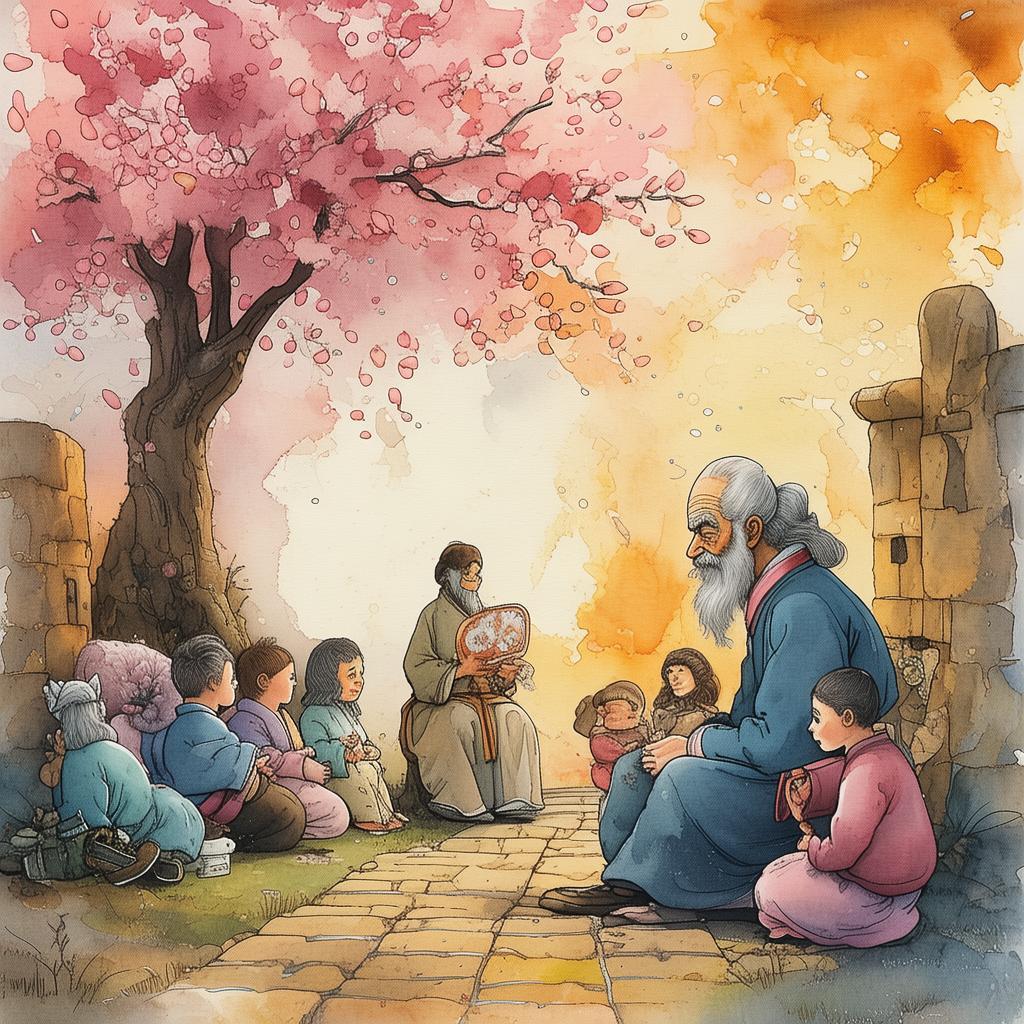
Mei listened intently, her heart touched by the words. She saw the world through Liang's eyes, a world where every stroke of the brush held a story, every color a message. She felt the weight of his dreams and the hope they carried.
Days turned into weeks, and Mei became a regular at Liang's studio. She helped him with his art, cleaning his brushes, arranging his paints, and most importantly, she believed in him. She saw the fire in his eyes, the passion in his strokes, and she knew that this destitute artist was more than just a man with a brush.
One day, as Mei watched Liang paint, she noticed a peculiar pattern emerging in the canvas. It was a map, a map that led to a place she had always dreamt of visiting. She asked Liang about it, and he smiled, revealing the true nature of his art.
"This map," he said, "is not just a painting. It's a journey, a path to a place of hope. I want to create this map for the world, to show them that even in the darkest of times, there is always a way forward."
Mei was inspired, and she decided to help Liang in his quest. She spread the word of his art, of his dream, and soon, people began to take notice. The once ignored artist was now sought after, his paintings becoming the talk of the town.
The world watched as Liang's art began to transform the city. His paintings of hope adorned the walls of schools, hospitals, and homes, inspiring people to dream, to believe, and to never give up. His map, now known as "Canvas of Hope," became a symbol of resilience, a beacon of light in a world often shrouded in darkness.
As the years passed, Liang's art became legendary. He was no longer a destitute artist; he was a visionary, a creator of hope. His story, once just a dream painted on a canvas, had become a reality, a testament to the power of dreams and the indomitable spirit of humanity.
One evening, as Liang stood before his latest masterpiece, a young girl approached him. She was Mei, now grown, her eyes filled with tears of joy. She handed him a small, framed painting, a painting of the ocean and the ship, the same painting that had started it all.
"This is for you, Liang," she said, her voice trembling. "It's the painting that changed my life, that showed me that even in the darkest of times, there is always a way forward."
Liang took the painting, his heart swelling with gratitude. He looked at the painting, at the ocean and the ship, and he knew that his journey was far from over. His canvas of hope was just the beginning, a canvas that would continue to inspire and transform the world for generations to come.
And so, the destitute artist who had once painted dreams on the canvas of hope, found his true calling, not just as an artist, but as a beacon of hope for all who needed it. His story, his journey, would forever be etched in the hearts and minds of those who believed in the power of dreams and the resilience of the human spirit.
✨ Original Statement ✨
All articles published on this website (including but not limited to text, images, videos, and other content) are original or authorized for reposting and are protected by relevant laws. Without the explicit written permission of this website, no individual or organization may copy, modify, repost, or use the content for commercial purposes.
If you need to quote or cooperate, please contact this site for authorization. We reserve the right to pursue legal responsibility for any unauthorized use.
Hereby declared.

